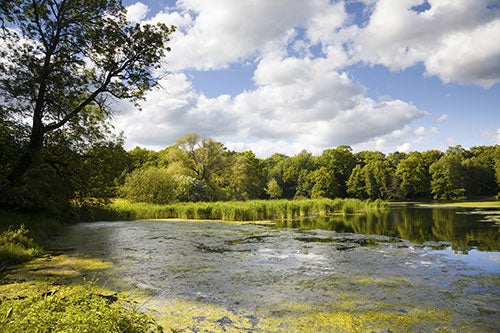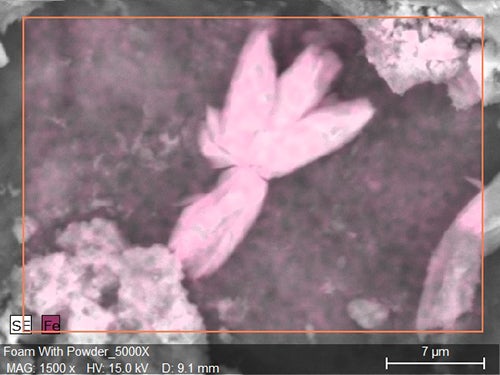
Waterloo’s green tech solution to rid waterways of toxic algae
Waterloo scientist partners with Ontario company to get phosphorus out of wastewater before it enters our lakes and rivers

Waterloo scientist partners with Ontario company to get phosphorus out of wastewater before it enters our lakes and rivers
By Suzanne Bowness Marketing and Strategic Communications
Photo credit: iStock/ArtHdesign
Phosphorus is one of those nutrients that can be helpful or harmful, depending on its location. As a soil fertilizer it provides an essential nutrient for food crops but in our waterways it’s an unwelcome fertilizer providing the essential missing nutrient for toxic algae.
That’s why a Waterloo scientist has partnered with a local company to evaluate the geochemical processes involved in their new technology that removes 90 – 98 per cent of phosphorus from residential wastewater.
Lingling Wu, an assistant professor in the Earth and Environmental Sciences Department, is working with Waterloo Biofilter Systems, founded by Craig Jowett, a former Waterloo science professor. Lu is researching ways to dissolve iron into sewage using low-energy electrochemistry, which then forms an iron-phosphorous mineral in a subsequent filtration system.
“If we want to protect our environment and ecosystem, we definitely need to pay attention to what goes in sewage and what's being released into rivers and lakes,” says Wu.

A microscopic picture of a mineral called vivianite that is made up of iron and phosphorus, caught in a filter at a Waterloo Biofilter field site. The denser/intenser the pink color, the higher concentration of iron.
Besides its high rate of phosphorus removal, the other benefit of the Waterloo Biofilter system is that it can be retrofitted to existing septic systems, which makes it a natural fit for cottages and other remote locations.
It can also be scaled up for larger commercial sites such as one installed in a Manitoba provincial park. Compared with conventional systems, that simply separate the phosphorous sludge for treatment elsewhere, this new system is a one-step process designed to avoid any further treatment. The research being carried out at the University of Waterloo has helped the technology gain acceptance for new developments on lakes in Northern Ontario municipalities.
“When phosphorus gets into rivers and lakes, it could cause a toxic cyanobacterial bloom which releases toxins that cause a range of health problems,” says Wu. Cyanobacteria releases liver and nerve toxins that can cause death to animals. People who inadvertently drink water contaminated with algae can suffer everything from fever to headache and vomiting.
Wu’s connection to Waterloo Biofilter Systems was facilitated through the Southern Ontario Water Consortium , which helps researchers and water technology companies connect to tackle issues related to wastewater, drinking water, ecotoxicology, watersheds, sensors and data.
Wu is a member of the University of Waterloo’s Water Institute which has more than 125 researchers who are working in the area of water science, technology, management and governance. Waterloo Faculty form the core of the institute who explore everything from marine biology to groundwater hydrology and water policy.

Read more
Here are the people and events behind some of this year’s most compelling Waterloo stories

Read more
From co-op to startup: Waterloo students develop an AI platform that uses real-time data for wildfire prediction and early prevention

Read more
Meet the five exceptional graduate students taking the convocation stage as Class of 2024 valedictorians
The University of Waterloo acknowledges that much of our work takes place on the traditional territory of the Neutral, Anishinaabeg, and Haudenosaunee peoples. Our main campus is situated on the Haldimand Tract, the land granted to the Six Nations that includes six miles on each side of the Grand River. Our active work toward reconciliation takes place across our campuses through research, learning, teaching, and community building, and is co-ordinated within the Office of Indigenous Relations.